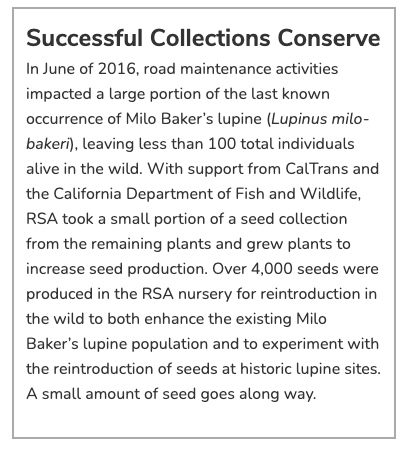Banking the Diversity of the Golden State
About six years ago, a curious graduate student decided to conduct a gap analysis of the conserved collections and the rare plants in California. Soon after, the CPC Participating Institutions within the state would be brought together to begin collaborating to fill the gaps.
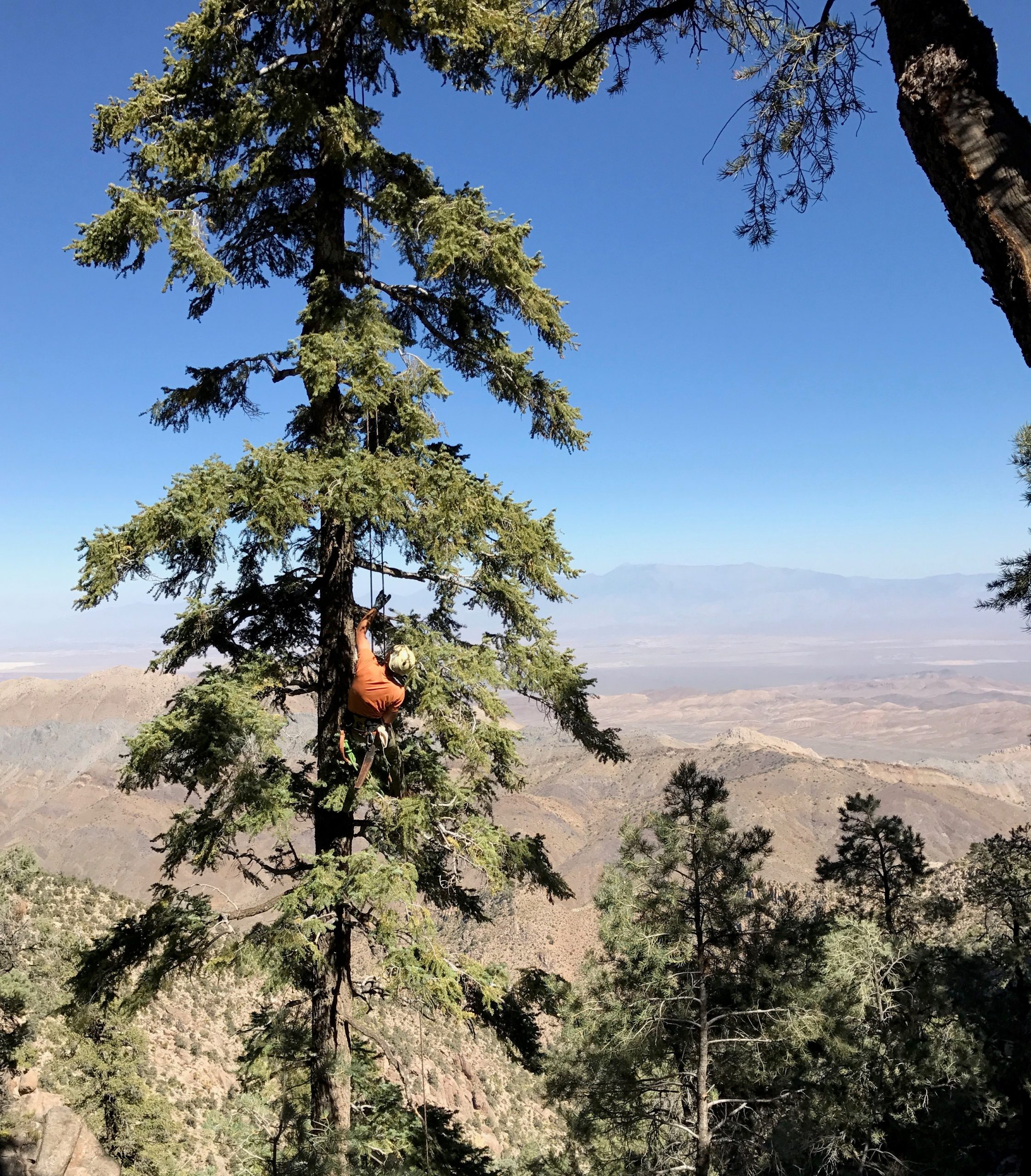
The student, Nick Jensen, had a Research Assistantship at the California Seed Bank at Rancho Santa Ana Botanic Garden (RSA), a stronghold of rare plant seed collections in the state. Working with RSA staffers, Evan Meyer and Naomi Fraga, the team reached out to other seed bank institutions working in the state – largely other Participating Institutions in the CPC network – to better understand the collective progress to conserving the state’s unique botanical heritage. The published study pulled together data on over 500 rare plant seed collections. But with over 2,500 plants ranked as rare to some degree in the state, this impressive feat only amounted to 23% of these taxa. The collections did a bit better with the rarest of these (those rated as 1B – plants that are rare, threatened or endangered in California and elsewhere), having secured 30%, but still a far cry from the 75% established as a goal within the Convention for Biodiversity. The team at RSA realized a more coordinated and concerted effort was needed – and the seed for forming the California Plant Rescue (CaPR) collaborative effort was planted.
Fertilizing this idea, RSA connected with Dr. Peter Raven, Board Chair of CPC at the time, while at the Southern California Botanist Conference. Dr. Raven encouraged broadening the project to include not just the seed banks RSA had contacted to collect the initial data but also other CPC Participating Institutions and those working to join CPC. The broad set of collaborators across the state, which now includes CPC, California Native Plant Society (CNPS), East Bay Regional Park, San Diego Botanic Garden, San Diego Zoo Global, Santa Barbara Botanic Garden, University of California Botanical Garden, University of California at Davis Arboretum & Public Garden, University of California at Los Angeles (UCLA), and University of California at Santa Cruz Arboretum and Botanic Garden, came together under a Memorandum of Understanding in 2015 with the ambitious goals of meeting the Convention for Biodiversity goal and, more broadly, conserving all of the diversity of the state and the California Floristic Providence.
Since then, the group has made great strides, both tangible and intangible. Annual meetings and regular conference calls keep the group in touch and increase the opportunities for learning and collaborating. The group has pooled their data, again, but this time in a database accessible to each of the partners and readily updatable. The public, and land managers, can search a lite version of the database through the collaborative group’s website as well. CaPR has come together for workshops, presentations, developing outreach materials, seeking funding opportunities, and more. Significantly, the past few years have seen an increase in the rarest species being collected, and along maternal lines, for conservation. As of the 2018 collection season, the group has collectively saved 46% of California’s 1B ranked species in seed banks. An additional 13% are found in CaPR partners’ living collections.
Whether or not the group reaches the 75% goal may quite literally depend on the weather. A good year for the native plants in 2019 promises to convert to a great collection year. Regardless, California is well situated to ensure that its botanical treasures are secured in good time.
The initial gap analysis provided some further insights on how to strategically move forward. Through the analysis it was clear that species protected by the federal endangered species act (ESA), or even the California ESA, had much better odds of having already made it into collections. Clearly, the funding mechanisms already in place to help listed species had helped these species meet this conservation benchmark. The remaining 850 or so of the 1Bs had no such support. Until recently.
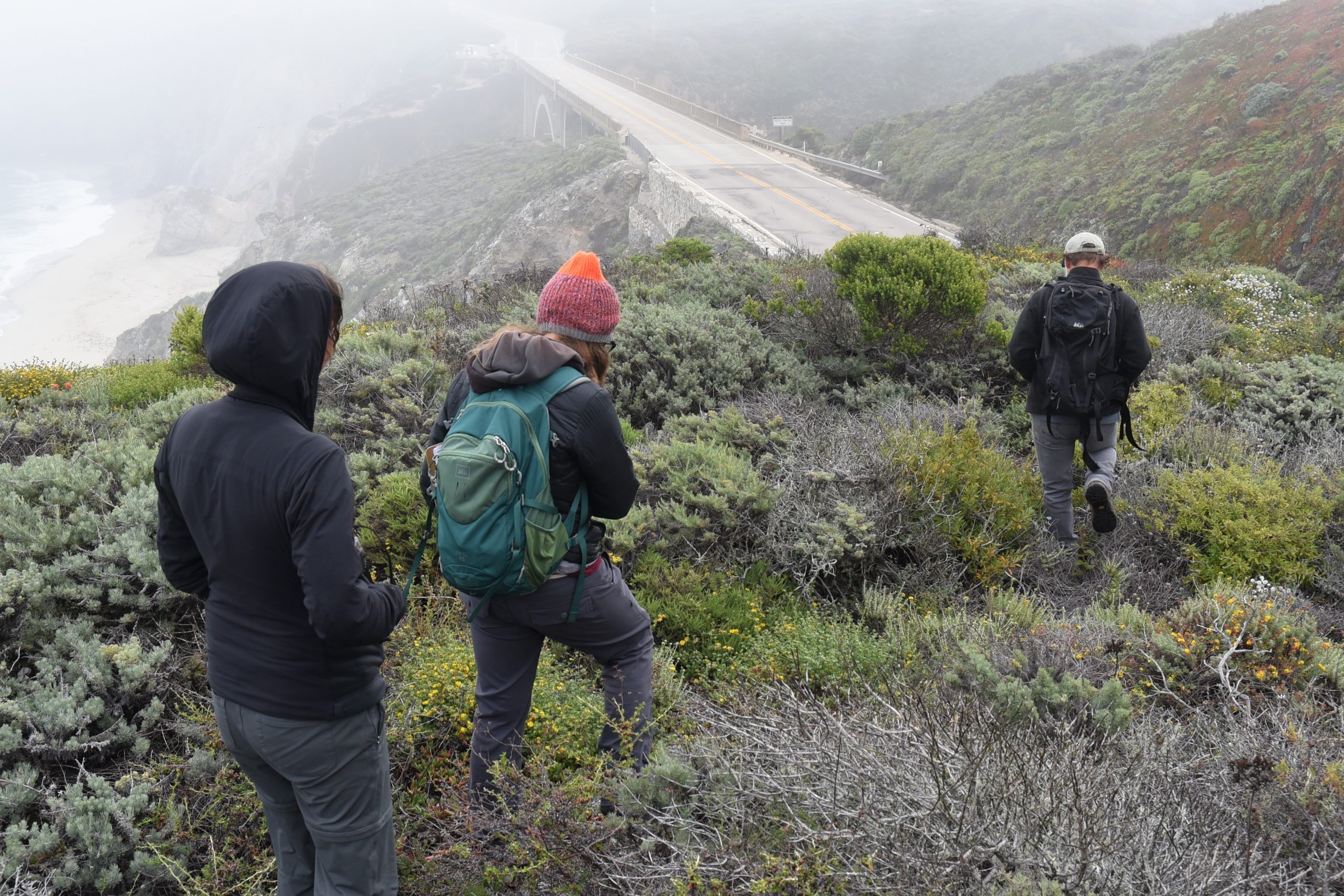
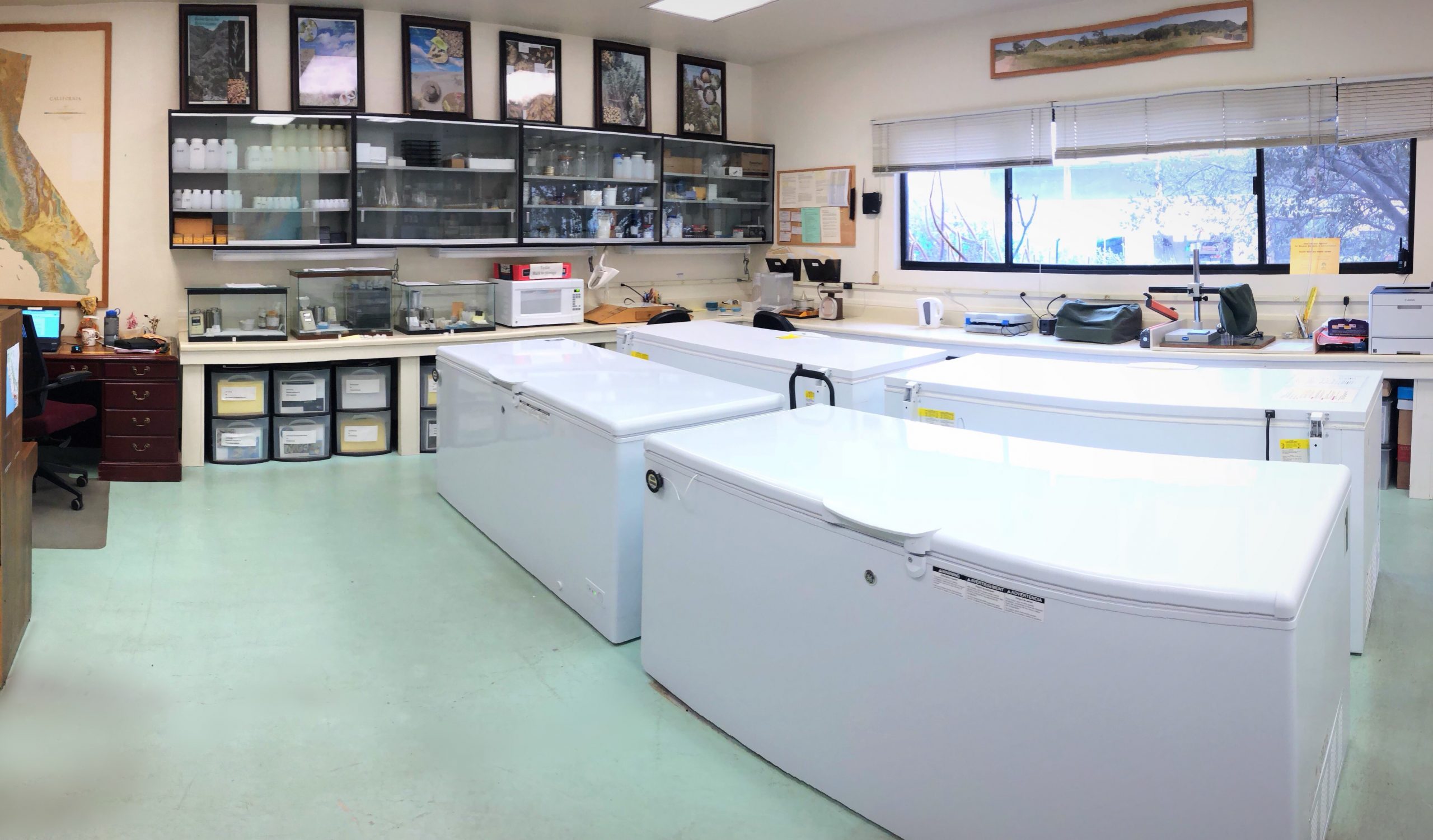
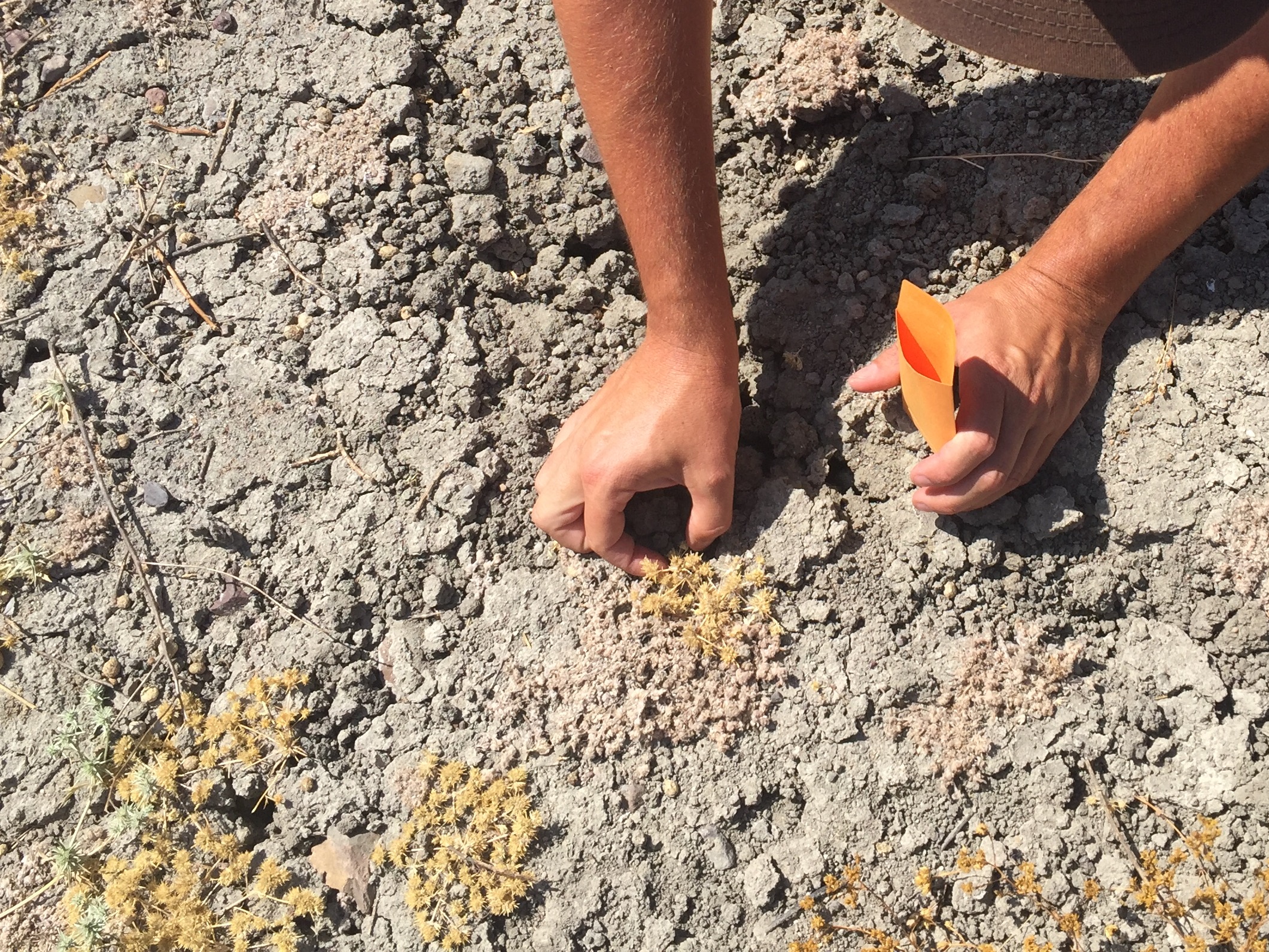
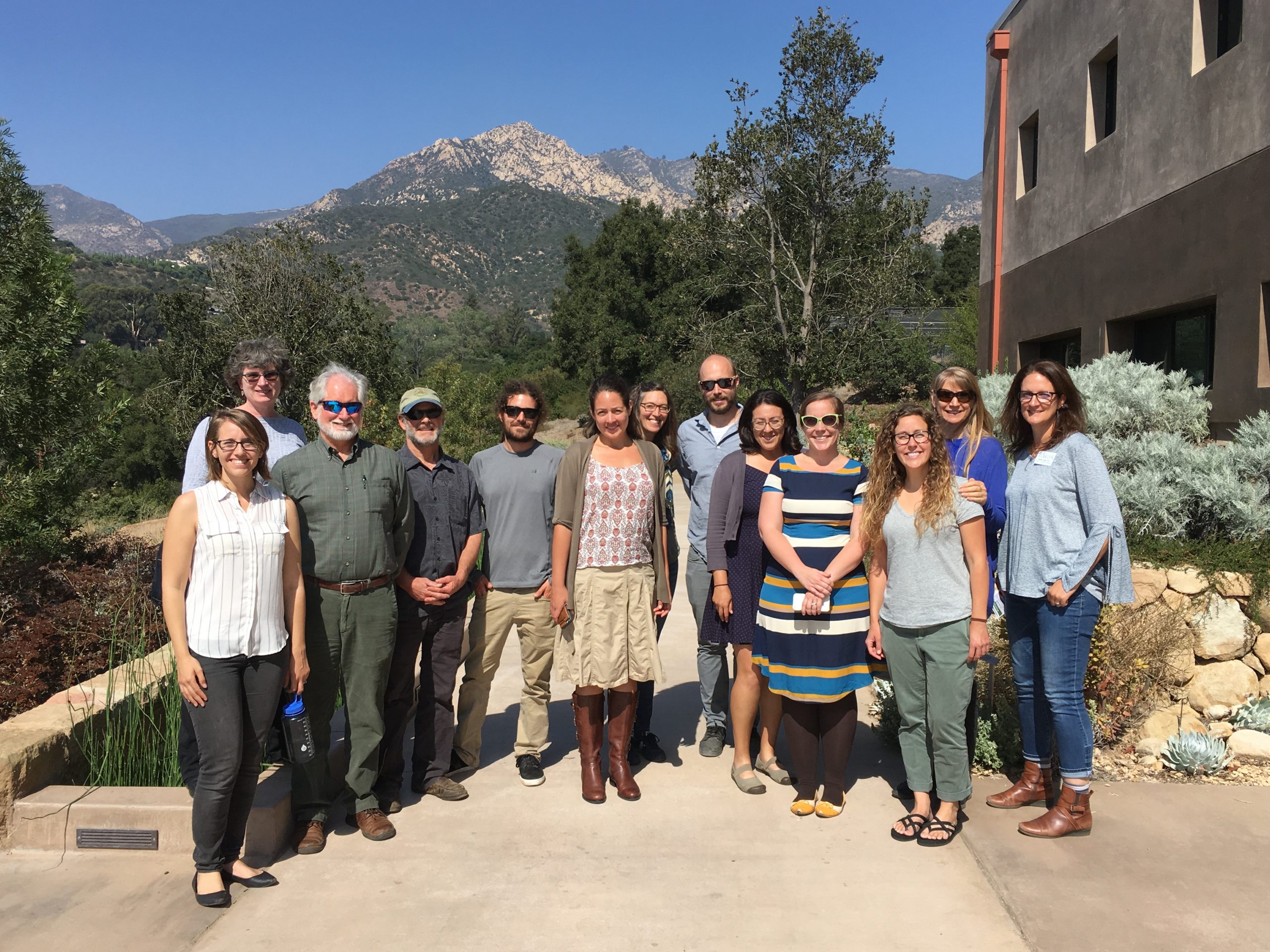
This summer started with some excellent news for the unlisted rare taxa, and the flora of California in general: the approved state budget includes $3 million to be spent over five years to support the seed collection and banking of the 1B plants in the state. This conservation boon was the result of the quick mobilization for advocacy of CaPR member, the California Native Plant Society (CNPS) to enable the California Biodiversity Initiative. The initiative was spearheaded by Governor Jerry Brown (and supported under his successor, Governor Gavin Newsom) and the biodiversity experts they gathered, to “secure the future of California’s Native Biodiversity”.
The CaPR group has high hopes that the funding allotted in the budget will be allocated in a way that will help them secure California’s flora. To guide their collection priorities, they are currently working on a new gap analysis, one that builds on their newly developed tools, as well as phylogenetic and spatial data. With the new gap analysis tools, CaPR will be able to prioritize the collections using criteria critical to each institution and target new lands to get access and permission to collect. Between the new gap analysis and their previous endeavors as a group, CaPR is well prepared to conserve the amazing floral treasures of the Golden State.
